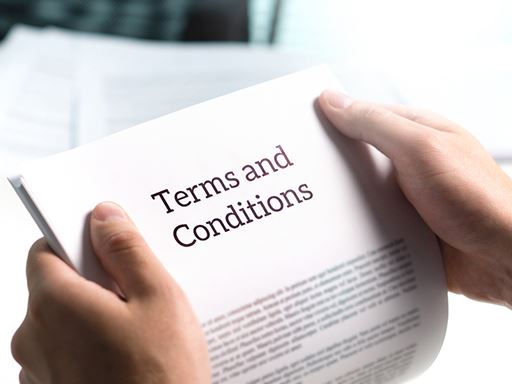Introduction
As your ingredient partner, Corbion is committed to ensuring you are kept informed at all times about changes to any aspect of the products we supply to you.
This includes, of course, changes in the regulatory status of products we provide, as we know such changes may affect the way products and materials are labelled, packed, handled, and transported.
- The CLP classification of L-Lactic acid (CAS Number 79-33-4) has changed. It has to be classified as a substance corrosive for the skin, based on a new recommendation from the European Chemicals Agency (ECHA).
- A new Annex VI of the CLP (Classification, Labelling and Packaging) Regulation (EC) 1272/2008 was published on August 11, 2020. This Annex includes L-Lactic acid with a classification containing new hazard phrases for product labels: H314 'Causes severe skin burns and eye damage' and EUH 071 'corrosive to the respiratory tract' (only valid in the EU) instead of the current H315 'Causes skin irritation' and H318 'Causes serious eye damage.'
- The hazard pictogram on the labels stays the same (Corrosive). Therefore, product handling should adhere to the local regulation for corrosive products.
- The industry was allowed a period of 18 months from publication of the new regulation to implement this change. This means the change went into effect by March 1, 2022.
- The new classification implies that lactic acid should also fall under the ADR regulation where applicable. Lactic acid was included in the generic UN number “UN 3265 for class 8 - Corrosive liquid, acidic, organic, n.o.s.” This was implemented by March 1, 2022.
- Please note that this classification does not apply to lactic acid salts (lactates).
What does this change in classification mean for products and formulations (mixtures) that contain L-Lactic acid?
All products containing >5% L-Lactic acid must be classified as Skin Corrosive Cat 1C, according to GHS calculation rules, unless testing results on your product prove otherwise; test results always take precedence over calculation rules. Be sure to take into consideration any other skin corrosive ingredients that may be present in your product. This >5% limit also applies to buffered lactic acid mixtures where lactates are added.
What does this change in classification mean for lactic acid powder?
The classification change applies to the chemical L-Lactic acid (CAS 79-33-4), i.e. is in principle independent from the physical form it is available. However, Corbion possesses skin corrosion studies with several of our lactic acid powders. The results show that these powders are non-corrosive to skin and therefore do not have to be treated as dangerous good. Our SDS show the correct classification per product.
Does this change affect the classification of lactic acid with the general CAS# 50-21-5 and the optical isomer D-Lactic acid (CAS# 10326-41-7)?
Although, strictly speaking, these substances are not included in the classification, labelling, and packaging (CLP) regulation Annex VI (translation of the GHS for EU), Corbion as the global market leader chooses to harmonize the classification and labelling of all lactic acid CAS#. The reason is simple: D-Lactic acid does not behave differently on skin than the L-isomer.
What does this change in classification mean for lactic acid derivatives like lactates, esters, lactylates, PLA, etc.?
This change has no impact on lactic acid derivatives; under GHS, they retain their current classifications.
What happens if I store lactic acid in bulk at my site?
The new classification requires that lactic acid be stored as a corrosive material. Storage regulations are defined at the national level (for example, MIE-APQ in Spain, PGS15 in the Netherlands, GefstoffVO/TRGS 510 in Germany). For detailed guidelines, please refer to your country-specific legislation.
What happens if I store packed goods in my warehouse?
The new classification requires that lactic acid be stored as a corrosive material. Storage regulations are defined at the national level (for example MIE-APQ in Spain, PGS15 in the Netherlands, GefstoffVO/TRGS 510 in Germany). For detailed guidelines, please refer to your country-specific legislation.
What is the impact of this change on transport classification?
The new classification as skin corrosive implies that lactic acid falls under the ADR regulation where applicable. Lactic acid was included in the generic UN number “UN 3265 for class 8 - Corrosive liquid, acidic, organic, n.o.s.” Corbion has applied the ADR requirements since 1 March 2022 , the date by which the new CLP classification (Annex VI) had to be applied.
Will Corbion update their REACH dossier?
As the new classification of L-Lactic acid applied beginning 1 March 2022, Corbion has updated the REACH dossier accordingly.
What does this mean for non-European countries?
All GHS countries apply the same calculation rules for skin irritation/corrosion. Corbion is applying the EU change from Skin Irritant Cat 2 into Skin Corrosive Cat 1C also in all other countries.
What does the change in classification of L-Lactic acid mean for companies that import lactic acid (as a stand-alone material or in formulations) into Europe?
Companies importing lactic acid must apply the EU-GHS (CLP) rules, i.e., use the new classification of L-Lactic acid.
What does this mean for non-European producers of lactic acid selling outside of Europe?
Producers outside Europe must apply the GHS rules of the country where they put the lactic acid on the market.
What does that mean for packaging of lactic acid?
Packaging for lactic acid must be UN compliant, Class 8 - PGIII.
What is EUH071?
This hazard phrase is a EU only requirement and does not fall under GHS. This statement is: “corrosive to the respiratory tract.”
Link to the draft regulation amending Annex VI to CLP, ATP15
https://eur-lex.europa.eu/legal-content/EN/TXT/PDF/?uri=CELEX:32020R1182&from=SL


